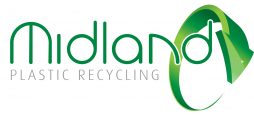Plastic Recycling Processes
Pre-Preparation
Enabling plastics to be collected for recycling is as important a part of the process as the physical recycling itself. On their own the plastics are often too light to be viable to collect for recycling, certainly over long distances as the cost would be prohibitive.
Baling – Compressing materials in a horizontal or vertical press to produce a bale held together by twine or wire. Particularly useful for products like plastic film where if left uncompressed, takes up large volumes of space (mainly fresh air). The compression rate achieved can be as much as 10:1 enabling you to transport 10 times as much plastic in the same space compared to if it was left un-baled.
Compacting – Similar to baling, a compactor compresses materials into a smaller space than they would otherwise take up. In plastics recycling compactors are usually used for Expanded Polystyrene (EPS) where the material is compressed and heated, compacting the EPS into a briquette. The heating helps to encourage the material to bind to itself to form the briquette and stop the material from expanding again afterwards.
Preparation
As in many areas of business and in life, preparation is the key to successful plastic recycling and producing a quality plastic raw material that can be used for manufacturing new plastic products.
Prior to any mechanical recycling process taking place we need to ensure that different plastic types are not mixed, metal parts, paper labels and excess dirt and dust are removed from the plastic scrap. The following preparation processes may be required:-
Sorting – Identifying components of differing polymer types to allow them to be processed separately and thus ensure the highest quality plastic raw material feedstocks using a variety of manual, mechanical, optical, density and chemical reaction techniques.
Sawing – Some plastic components (like long lengths of extruded pipe) are just to large to fit into even the largest granulation and shredding equipment and so has to be cut down to more manageable sizes.
Stripping – Plastic is often only one component part of a product sent for recycling. Things like computers, televisions, wheeled bins, refridgerators etc. are often complicated assemblies which can include metal parts, different polymer types, plastic or paper labels, foam etc. These items all need to be stripped off and segregated prior to mechanical recycling.
Size Reduction
The final recycling process for most plastics is a heat based process where the plastic recyclate is melted down and either reformed into new product or compounded with additives and colourants and pelletised into a high quality raw material that can then be used to manufacture new products. Before these heat processes can be used it is usual to have to reduce the plastic waste down in size. This is generally done by one or both of the following processes:-
Shredding – Shredding is a quick and efficient way of reducing large unwieldy plastic components into a manageable size. The process involves a spinning rotor which rips the plastic apart. The resulting output is an irregular shaped, roughly cut – approx. 60mm (can be smaller) – product that is generally still too large to use into a heat based compounding or thermoforming process.
It is usual therefore to combine shredding and granulation to provide the best quality feedstocks in the shortest possible time.
Granulation – This process is similar to shredding, whereby rotating blades cut the plastic components into irregular shaped pieces usually 6mm-12mm in diameter depending on screen size or customers preference.
Unlike shredding however, the use of grids in the grinding process allow us the plastic recycler to control the resulting size of the reground, which can then be used as a raw material for subsequent heat based processes.
To find out more about how Midland Plastic Recycling can help you with the recycling of your waste plastics, please call us on the above number or send us your details via our contact form
